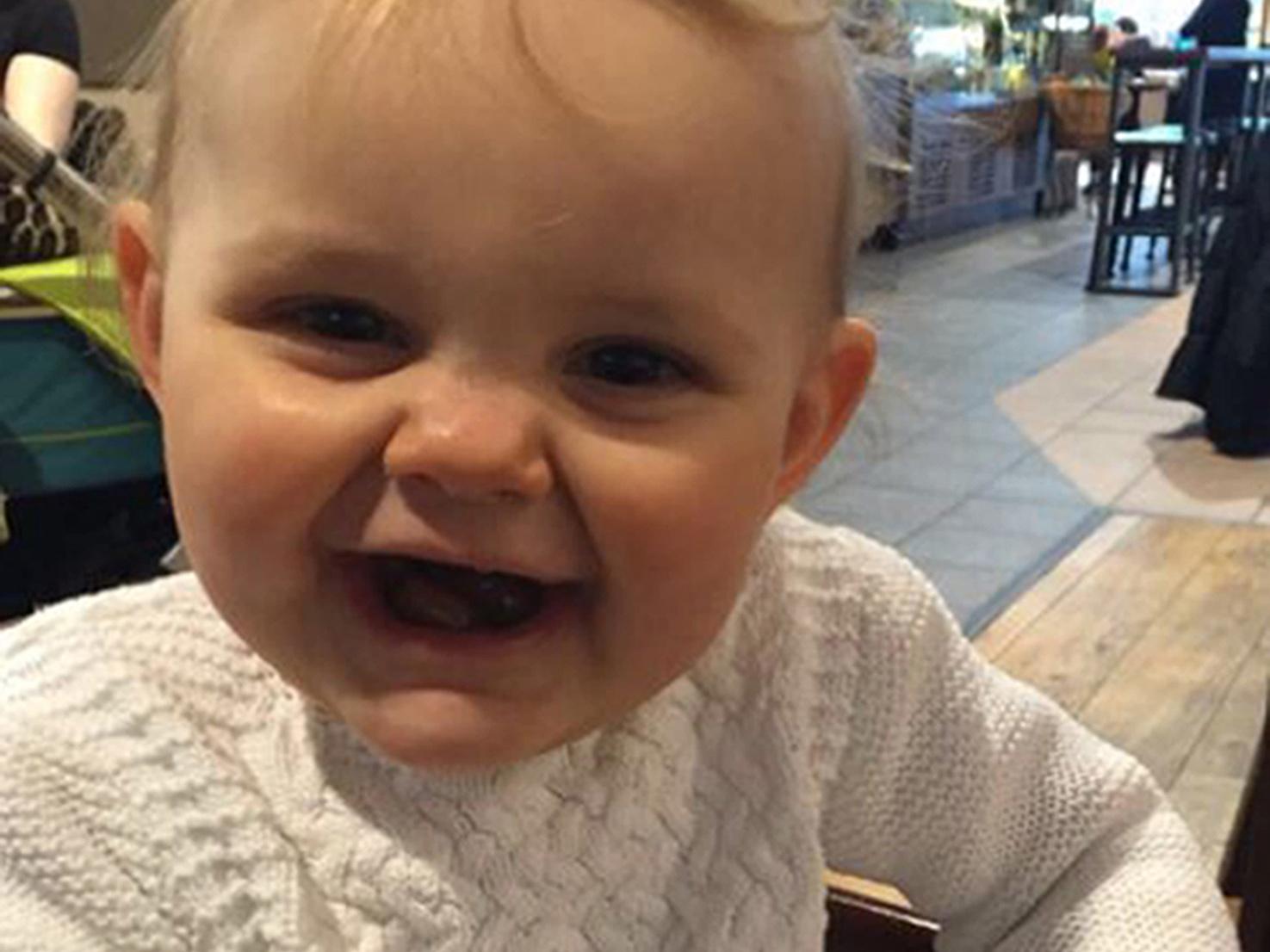Elsie Scully-Hicks: Toddler 'shaken violently' and 'thrown against hard floor' before she died, court hears
Adoptive father on trial after 18-month-old baby girl dies of subdural bleeding

An 18-month-old girl was probably “shaken violently” and then “thrown against a hard floor” or possibly had her head knocked against a wall before she died, a court has heard.
Elsie Scully-Hicks was rushed to hospital after a 999 call made by her adoptive father, Matthew Scully-Hicks, who is accused of inflicting serious injuries on her.
Elsie, who had been formally adopted by Scully-Hicks, 31, and his husband, Craig Scully-Hicks, 36, two weeks earlier, was found to be suffering from three separate areas of subdural bleeding, a skull fracture and fractures to three ribs and her leg when she was admitted to University Hospital Wales on May 25 2016.
The toddler, who also had retinal haemorrhages in both eyes, died four days later.
Scully-Hicks, a part-time fitness instructor, from Delabole, Cornwall, who had been looking after Elsie at the couple's home in Llandaff, Cardiff, at the time, denies murder.
During Scully-Hicks' trial at Cardiff Crown Court on Thursday, Dr Stephen Rose, a consultant paediatrician, said it was “likely that Elsie Scully-Hicks had been shaken violently and that her head had been rocked backwards and forwards so that her head was flexed down on to her chest and flexed backwards”.
“This mechanism would then cause the subdural bleeding, or the bleeds around the brain, and the retinal haemorrhages and also it would cause her to stop breathing,” he said.
Dr Rose added of Elsie's skull fracture: “There must have been a cause of the fracture; skull fractures don't occur spontaneously and so the only mechanism for a skull fracture is if there was a blow to the head, either during the shaking injury which culminated in Elsie being thrown against a hard floor, or possibly her head being knocked against a wall.”
Dr Rose said the microfractures to the back of three of Elsie's ribs were “caused by crushing injuries, so an adult's hand around the chest, compressing the chest forcibly”.
Robert O'Sullivan QC, for the defence, asked Dr Rose if the absence of serious neck injury in Elsie would cause him to further consider whether there could have been this “violent rocking motion”.
Dr Rose said it did not because a child's spine is flexible so there was no reason why there should be any damage to that area.
Mr O'Sullivan asked if an incident in a babyseat in the car where Elsie had been “moved back and forth trying to lock it quite forcibly” could explain her injuries.
Dr Rose said that was unlikely because he would “expect the neck muscles still to be in play and therefore control her head movements”.
The court previously heard that Elsie had been well throughout the day of her admission to hospital, had been to playgroup and had eaten at home.
Scully-Hicks called the emergency services at 6.20pm.
He told police he had changed Elsie's nappy on the rug in the living room and had then taken her clothes and dirty nappy out of the room.
Scully-Hicks said when he returned to the living room two or three minutes later, Elsie was still on the floor but was not breathing or moving.
Consultant paediatrician Dr Marian McGowan said she thought it was “improbable” that all the injuries Elsie presented with “arose separately and coincidentally”.
“I think the likelihood is that they are part of a single event,” she said.
“I think the only explanation is that the child had suffered significant trauma.”
She said there was nothing in the history provided by Scully-Hicks about what happened to Elsie that could account for the injuries.
Dr McGowan added that, following the injury, Elsie would have been distressed but that she would quickly have become “very unwell” and then unconscious.
Scully-Hicks denies one charge of murder.
The trial is expected to last for five weeks.
PA
